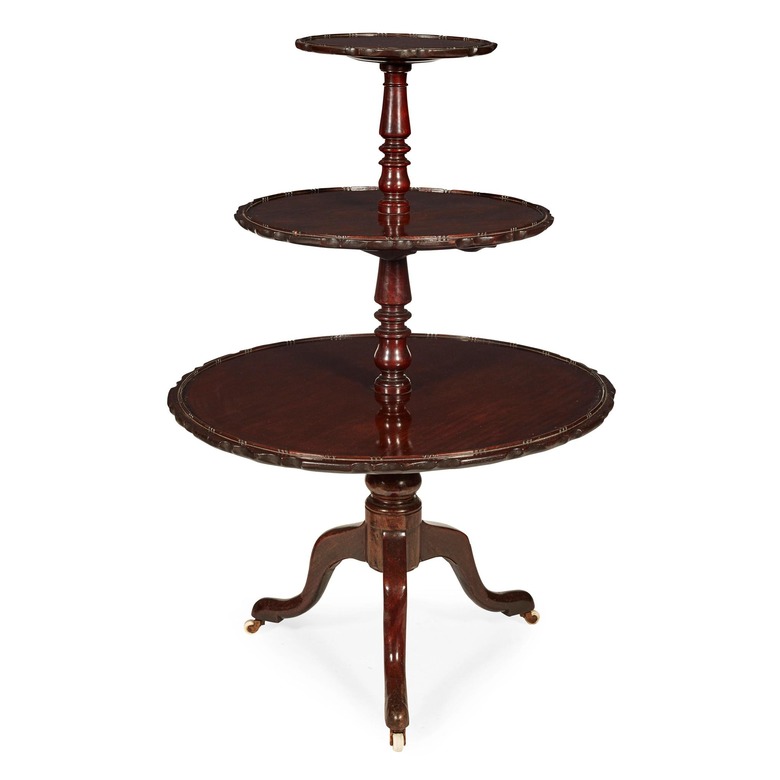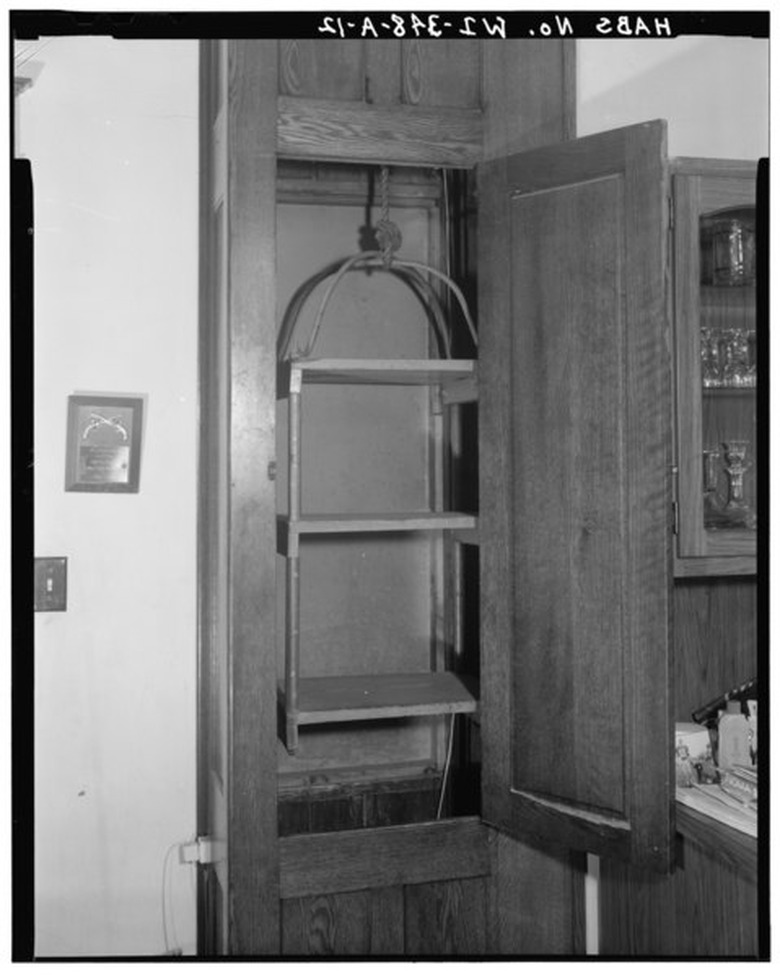The Dark And Upsetting History Of Dumbwaiters
From Ancient Greece to France to The White House, the dumbwaiter has had a history that spans continents. At one point, it also looked nothing like the dumbwaiters we know of today, which elevator company Inclinator defines as "small lifts that have an electric operation to move goods between floors."
Where was the dumbwaiter invented?
Where was the dumbwaiter invented?
The first version of the dumbwaiter that we know of dates back to Ancient Greece. Using ropes and pulleys, this rudimentary dumbwaiter allowed workers to move heavy loads from the ground to upper levels. Ancient Rome then ran with this idea, according to Inclinator, using hundreds of men to move animals and gladiators up 24 lifts to the Colosseum's fighting arena — which is, yes, quite different from what we use dumbwaiters for in modern times.
Eventually, the dumbwaiter evolved to become a part of dining culture in France, when dumbwaiters were essentially portable serving stands that eliminated the need for servants to be present during meals. In the 1750s, specifically, Louis XV utilized a type of dumbwaiter so that he could dine in private.
What did a vintage dumbwaiter look like?
What did a vintage dumbwaiter look like?
According to The Age of Comfort: When Paris Discovered Casual—and the Modern Home Began by Joan DeJean, "[Louis XV's] dining room floor would open and the table volante 'flew' down; the floor then closed up again. Moments later, the floor reopened and the table reappeared with fresh china and the next course." The designer of this device was M. Loriot (believed to be Louis Adam Loriot, an inspector at the Palace of Versailles and a royal professor at the Royal Academy of Architecture).
Who brought the dumbwaiter to America?
Who brought the dumbwaiter to America?
Thomas Jefferson, who is often credited as the inventor of the dumbwaiter, actually got the idea from what he saw during his time in France. He then brought it back to the United States. On the website for Monticello, Jefferson's famed Virginia property, it states, "In Paris, Jefferson became accustomed to the French practice of using 'dumbwaiters,' small tiers of shelves on casters, for small dinner parties. These étagères [shelves] were also known in England throughout the eighteenth century." When he became the third president of the U.S., Jefferson also brought dumbwaiters to The White House.
After visiting both The White House and Monticello during the nineteenth century, author and political commentator Margaret Bayard Smith wrote that dumbwaiters "contained everything necessary for the progress of the dinner from beginning to end, so as to make the attendance of servants entirely unnecessary," according to the White House Historical Association. She described one of Jefferson's dumbwaiters as being a spring-loaded Lazy Susan that was built into the wall, allowing servants and slaves to remain in an opposite room where they could add and remove plates without being seen.
Why is the dumbwaiter problematic?
Why is the dumbwaiter problematic?
The privacy that the dumbwaiter provided is significant to note because dumbwaiters gave Jefferson the opportunity to have confidential mealtime conversations without his servants and slaves overhearing. If he was in the company of abolitionists, the dumbwaiters would also have served to keep Jefferson's slaves out of sight and out of mind. Hence, the name "dumbwaiter," which is believed to have come from the dumbwaiter acting as a silent (aka "dumb") servant.
Who patented the dumbwaiter?
Who patented the dumbwaiter?
The first actual patent for the dumbwaiter was officially filed by American inventor George W. Cannon in 1887. Inclinator describes his design as featuring pulleys and weights, but by the 1920s, the dumbwaiter would become an electrical operation in which an electric motor moved a lift between the levels of a building. That would explain why they were popular in restaurants and libraries with multiple floors.
While you are most likely to see a dumbwaiter in older, historic buildings, in September 2016, the Wall Street Journal did report that dumbwaiters were experiencing a resurgence. So if your home has multiple levels and you're tired of running items up and down the stairs, perhaps a dumbwaiter is in your future. Though, you should probably consider calling the device something else.




